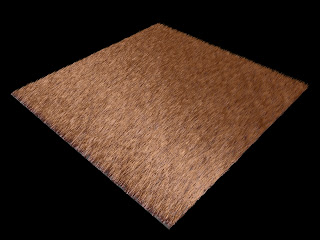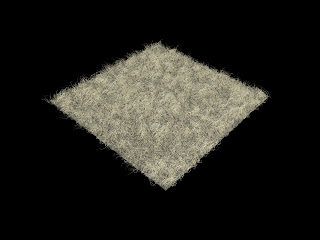 | ||
Wednesday 25 January 2012
Thursday 19 January 2012
Blue Velvet - Film Review
 |
| Fig. 1 Poster Art |
"Shocking, perverse, funny, unsettling, scathing, biting, and twisted, but undeniably original" (james kendrick, …) Blue Velvet is a film that makes one feel un-easy from the start, yet still wants to watch the full duration of the film. It pleases and disturbs the viewer at the same time which makes the film that more unique to watch. “..the last real earthquake to hit cinema...” (G. Maddin, 2006)
There is a certain horror aspect to the film however underneath there is a simple love story between Jeffrey (Kyle MacLachlan), a college student, and Sandy (Laura Dern) The story follows Jeffrey as he finds an ear lying in a field, as he begins to play detective and find out who the ear belongs to and why it is detached from the person. He traces the ear and finds out the location of a women Dorothy (Isabella Rossellini) who is connected with the people that took the ear. Jeffrey becomes an excited voyeur who witnesses Dorothy being sexually brutalized by Frank (Dennis Hopper), a violent thug who has kidnapped her son and husband in order to have his way with her.
 |
| Fig. 2 Frank |
Bibliography
http://www.qnetwork.com/index.php?page=review&id=2664
http://www.villagevoice.com/film/velvet-underworld
http://oldschoolreviews.com/rev_80/blue_velvet.htm
List of Illustrations
https://blogger.googleusercontent.com/img/b/R29vZ2xl/AVvXsEj0OLzPV5J-GESUgu5i9GaW1Pl6gpfMKiK-xC-b99sUkLWotAxNj7Sz3a8QSmAmDbWB5RjjdEYs_tiyd7PKN-KZDbBxjm3AaLJU_GmhEJ9UTrEE1pUqb7Ofe0nAxHjDSrfZd0hS2yW942zB/s640/Blue-Velvet_1232028922_resize_460x400.jpg
http://cinemafanatic.files.wordpress.com/2010/06/1986_blue_velvet2.jpg
Wednesday 18 January 2012
The Uncanny in Films: Research #1
Tintin:
Peter Jackson and Steven Spielberg hoped that the film would be a smash hit that would set the bench mark in progress for CG Animated films to come to date. The reality was that many viewers and critiques found that the film fell into the Uncanny valley, as New York magazine put it: "Tintin looks simultaneously too human and not human at all, his face weirdly fetal, his eyes glassy and vacant instead of bursting with animated life." The film did set out to conquer this barrier that films such as The Polar Express, Beowulf and Mars Needs Moms however it seems they could not quite make it.
The Uncanny Wall?
We've come up with the notion of the 'uncanny wall'," she says. "It suggests a viewer's discernment for detecting imperfections will keep pace with technology. As the human likeness increases, so the viewer becomes ever more discerning of little flaws. So when a new, more "realistic" character like Tintin comes along, they won't be rated as more humanlike – previous humanlike characters will actually sink lower into the valley. It's cognitive dissonance; we refuse to be tricked by technology."
Disc Design -
Tuesday 17 January 2012
Final Thumbnail - Concept Painting - Modelling
 |
| Final Thumbnail - Concept |
I hope to model everything in the scene, apart from the buildings and fences background, which I will include in the matte painting.
 |
| Final Concept - Not Finished |
The graffiti on the diving boards adds another element of abandonement, yet the everything else is clean, giveing it an uncanny feeling.
 |
| Test Materials Applied |
 |
| 0cclusion Pass |
 |
| Beauty and Occlusion pass |
I need to fix some of the uv's as some of them are a bit stretched, but so far I am happy with the progress.
Picnic at Hanging Rock – Film Review
 |
| Fig.1 Poster Art |
Picnic at Hanging Rock was released in 1975. The Australian feature film directed by Peter Weir and starring Anne-Louise Lambert, Helen Morse, Rachel Roberts and Vivean Gray is about the story of the disappearance of several schoolgirls and their teacher during a picnic to Hanging Rock on St. Valentine's Day in 1900, and the subsequent effect on the local community. A poetic and enigmatic drama that's a classic of Australian cinema The film is adapted from the novel of the same name, by author Joan Lindsay which is believed to be based on a true story.
Picnic at the Hanging rock starts at a Victorian school for girls in which the girls set off for a picnic trip to “The Hanging Rock”. Once getting there three of the girls ask if they can explore, they head of towards the rock slowly making their way up it becoming drowsy but finally go through a passage and not to be seen again, leading us the viewer into suspicion as to where and when they will reappear. Throughout the film and at the end the audience is left wondering what the film was about, maybe wondering if the film was completed?
“We are left with an uncanny respect for the mysteries in life that can never be solved by logic alone.” (Brussat, 2002)
The film vaguely resembles that of the film ‘Don’t look now’ with its slow build ups and scenes, which “constructs a film of haunting mystery and buried sexual hysteria. It also employs two of the hallmarks of modern Australian films: beautiful cinematography and stories about the chasm between settlers from Europe and the mysteries of their ancient new home” (Ebert, 1998) As Ebert states beautiful cinematography, contrasted with the mystery makes the film flow and immerses the viewer.
The emphasis within Weir’s cinematography on wildlife is massive, trying to make the viewer feel immersed in the film, almost as if they are looking ‘over the hedge’ to watch the film “His visionary camerawork keeps resting on plants, animals, hives of restless insects, the screen almost bursting with wildness. Weir’s emphasis is on nature’s alien quality, how these prim girls are set against unknowable forces.” (Nathan, 2010) adding to Nathan’s quote, the scenes almost don't make sense, giving the film a dream like feel. The colour tint of the frame gives everything a vintage feel.
Illustrations
http://www.convictcreations.com/culture/movies/pic1.jpg
Bibliography
Thumbnails - the rest
After completeting these thumbnails and showing them to Photoshop Phil, it seemed the swimming pool idea was the strongest, and he strongly suggested to continue with the idea. No.40 is what I am mostly hoping to progress with. The idea of the camera being within the pool looking out will also give good scope for modelling and also the matte painting.
Film Review - The Wicker Man
 |
| Fig.1 Poster Art |
Robin Hardy's The Wicker Man made in 1973 is a very surreal early seventies cult horror and musical. There are many scenes within the movie that make the viewer feel genuinely frightened for the police officer, Sergeant Howie (Edward Woodward) The basic plot of the film, follows Sergeant Howie to a secluded Scottish isle, where there is more than a case of disappearance of a local girl. The island claim they know nothing about the missing girl. This is a very common horror technique featured in many films today for example; Flight plan made in 2005. (Starring Jodie Foster.) All of the plots twists leave the audience feeling confused and, after the ending scene feeling sorry for Sergeant Howie
“But there is genuine fear in its nightmarish tableaux: the breast-feeding woman holding an egg in the ruined churchyard is like a detail from Hieronymus Bosch. And that final sequence, with the eponymous Wicker Man, is inspired.” (Peter Bradshaw, 2006) As Bradshaw says there is an almost ‘nightmarish feeling to the story, making us the viewers feel as if we are dreaming. “The screenplay which, for sheer imagination and near-terror, has seldom been equalled (Variety Staff, 2001) this film according to critiques, to this day has not been matched in the terror it evokes into the viewers.
 |
| Fig.2 The Burning |
The settings and music in the film add to the uncanny aspect of the film, especially when Sergeant Howie is inspecting the remains of the old church behind the school. “Windswept Christopher Lee in drag beautifully filmed by Harry Waxman and accompanied by Paul Giovanni’s risible ’60s-style folk revival soundtrack. Essentially, it’s an insane guilty pleasure, still enjoyable for its delightfully eccentric casting – Britt Ekland’s fine Scottish accent and Hammer star Ingrid Pitt’s dour librarian” (Wally Hammond, 2007)
 |
| Fig.3 The Phalic Rituals |
Illustrations
Bibliography
(Peter Bradshaw, 2006) http://www.guardian.co.uk/film/2007/aug/24/horror
(Variety Staff, 2001) http://www.variety.com/review/VE1117796373?refcatid=31
Subscribe to:
Posts (Atom)






























